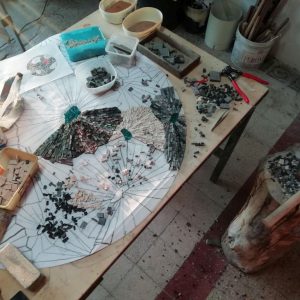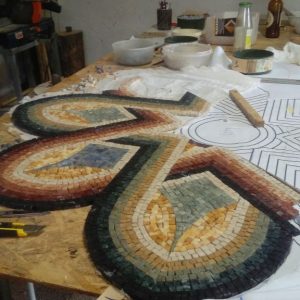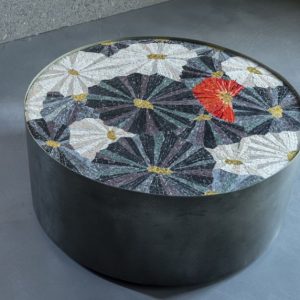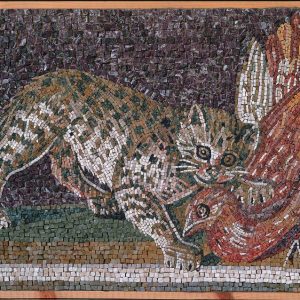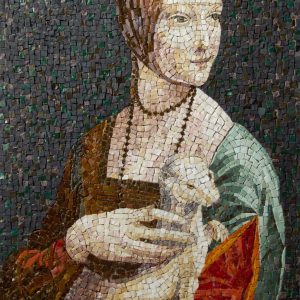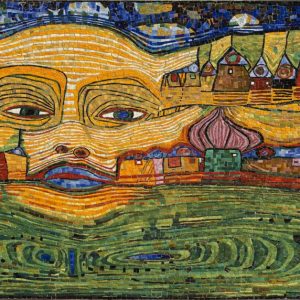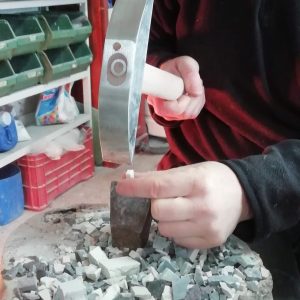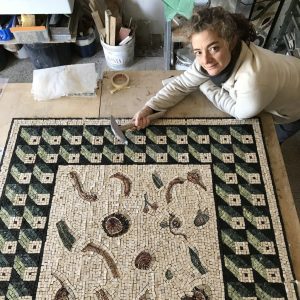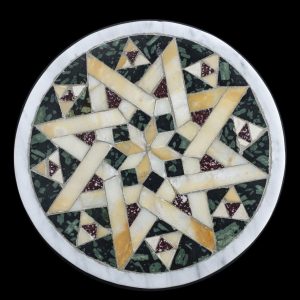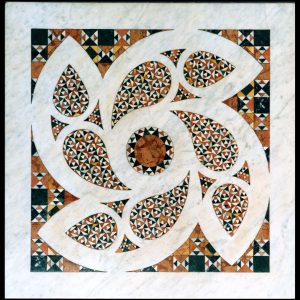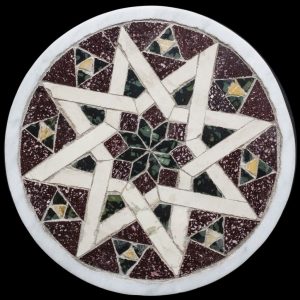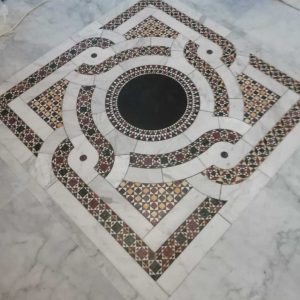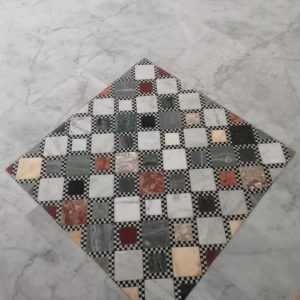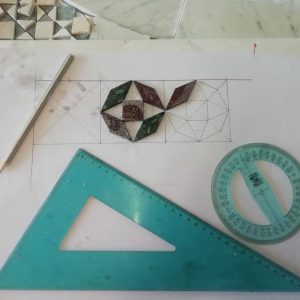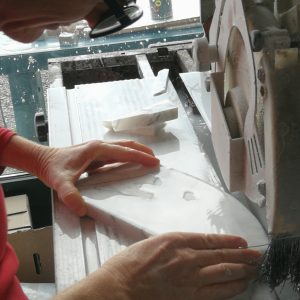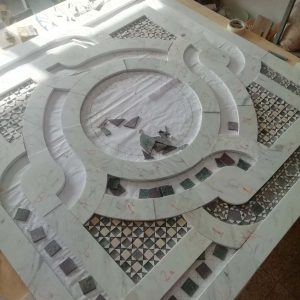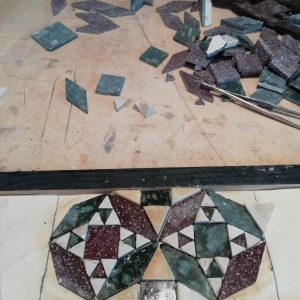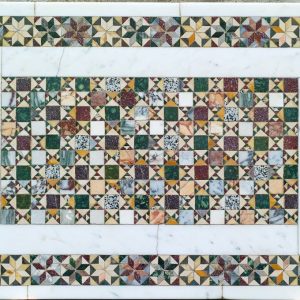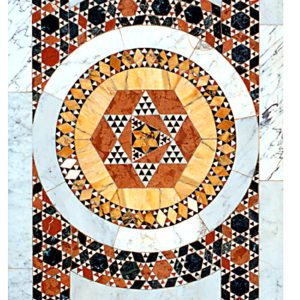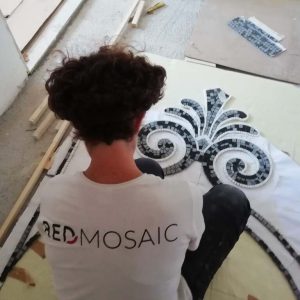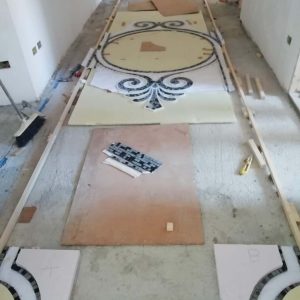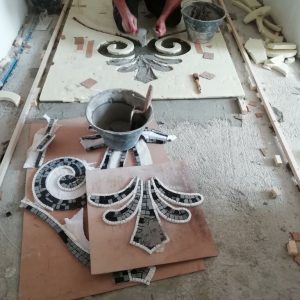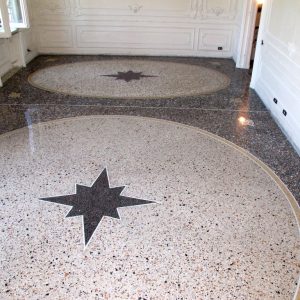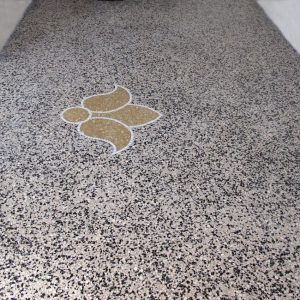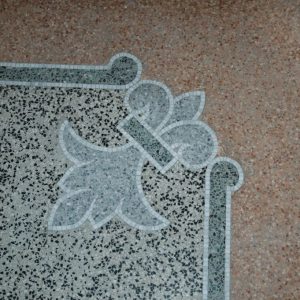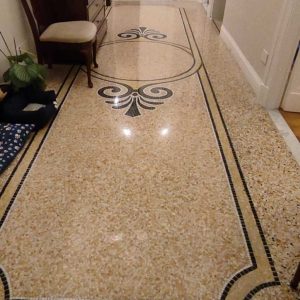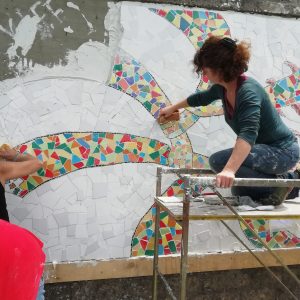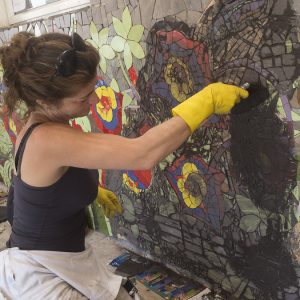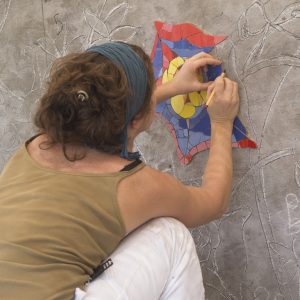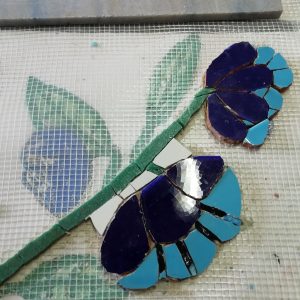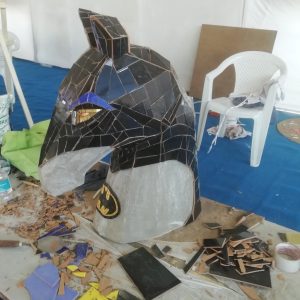MOSAIC ART
An ancient art still contemporary
Mosaic is an ancient art that still fascinates today and represents a unique and unmistakable form of decoration. This refined mosaic technique can be declined into a mere art form representing an artistic and aesthetic symbolism or it can be used as a decorative technique and therefore as a fine covering for various surfaces: tables, floors, walls and other objects.
CUT MOSAIC
Cut mosaic refers to the traditional technique, the first examples of which date back to the 3rd BC. when diced tiles are introduced to replace the pebbles. The cutting technique allows the mosaicist to use more precise shapes and therefore to create increasingly refined designs. The tiles are cut one by one with the hammer and the cutter. Normally the size of the tile is about 1×1 cm but mosaics can also be created with 1 or 2 mm tiles.
COSMATESQUE
When we talk about the Cosmatesque style we are referring to polychrome marble inlays that compose geometric patterns to embellish floorings and cloisters. This workmanship is a characteristic of the families of Roman marble workers of the 12th and 13th centuries. In fact the term “Cosmatesco” derives from the name of the family of Roman marble workers descended from Cosma di Jacopo who worked in the 13th century creating floors and tabernacles of the major Roman basilicas of the time.
TRENCADIS
The greatest example of how broken and fragmented tiles, destined to be thrown away, can instead return to a better life by embellishing and embellishing wavy architectural elements, three-dimensional decorations, walls, floors.
Trencadis in fact derives from the Catalan “trencat” which means broken, fragmented. Unlike traditional mosaic it lacks a compositional grammar, it is much more instinctive. The most famous examples of trencadis are visible in the architecture of Antoni Gaudì.

In order to receive a quote, please fill the form. Once we get it we will reply as soon as possible.
Thank You!

